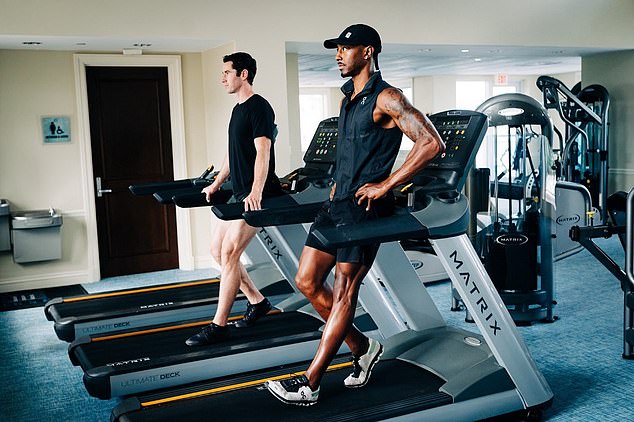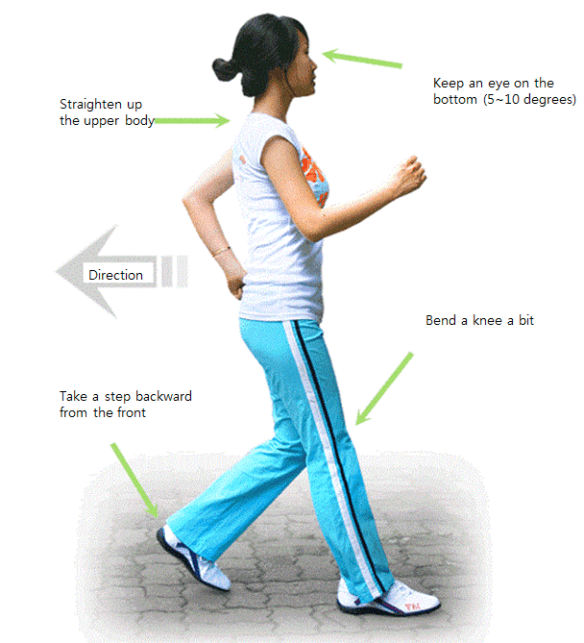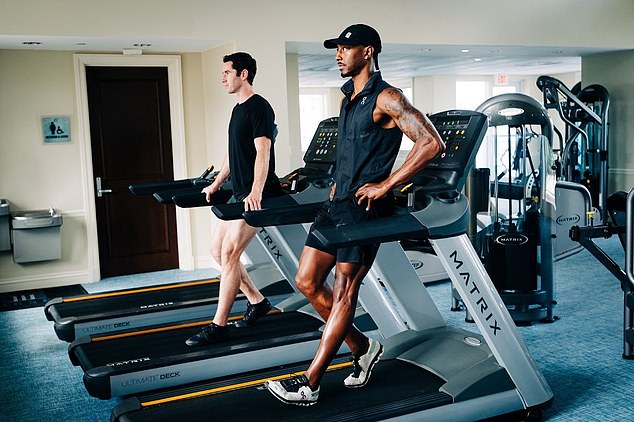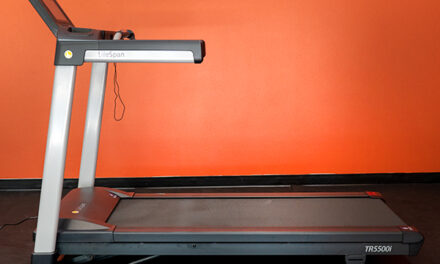If you’ve ever wondered what walking backwards on a treadmill can do for your fitness routine, you’re not alone. Many fitness enthusiasts are eager to discover new ways to challenge their bodies and maximize their workouts. Walking backwards on a treadmill offers a unique twist to your regular exercise routine and can provide a range of benefits. In this article, we will explore the advantages of this unconventional exercise and how it can enhance your overall fitness goals. So, get ready to take a step back and learn more about the wonders of walking backwards on a treadmill!
What Does Walking Backwards on a Treadmill Do
Are you looking for a new way to spice up your treadmill workout? Have you ever considered walking backwards on a treadmill? Walking backwards on a treadmill may seem unconventional, but it offers a range of benefits that can enhance your fitness routine. In this article, we will explore the various advantages of walking backwards on a treadmill, as well as discuss the muscles targeted, safety precautions, and tips to make the most out of this unique exercise.
Benefits of Walking Backwards on a Treadmill
Improved Balance and Coordination
Walking backwards on a treadmill requires a higher level of balance and coordination compared to walking forwards. As you move in the opposite direction, your muscles and sensory systems are challenged to adapt to this new pattern of movement. This increased demand on your balance and coordination can lead to improved motor skills over time. By regularly incorporating backwards walking into your treadmill routine, you can enhance your proprioception and overall stability.
Enhanced Leg Strength
One of the significant benefits of walking backwards on a treadmill is the enhanced leg strength it can provide. Walking in reverse primarily targets different muscle groups than walking forwards. As you move backwards, your quadriceps, hamstrings, glutes, calves, and hip flexors are engaged to a greater extent. By focusing on these muscles, you can build strength and resilience in your lower body. This can lead to improved athletic performance, increased power, and reduced risk of injuries.
Engagement of Different Muscles
Walking backwards on a treadmill activates muscles that may not be fully engaged during forward walking. Your quadriceps, located at the front of your thighs, are heavily worked as they are responsible for extending your knee joint. Similarly, the hamstrings, located at the back of your thighs, are targeted as they assist in knee flexion and hip extension while moving backwards. Furthermore, the glutes and calves play a significant role in stabilizing your body during this exercise. Engaging these muscles can contribute to a more balanced physique and overall functional strength.
Added Challenge to Cardiovascular Workout
In addition to the muscular benefits, walking backwards on a treadmill can also provide an effective cardiovascular workout. When you walk in reverse, your heart rate elevates, boosting your cardiovascular endurance. This increased demand on your cardiovascular system can help you burn more calories, improve your lung capacity, and strengthen your heart. By incorporating backward walking into your treadmill routine, you can add a new level of intensity to your cardiovascular workout.
Variation in Exercise Routine
Doing the same exercise routine day after day can become monotonous and lead to a plateau in your fitness progress. By incorporating backward walking on a treadmill, you can introduce a new and exciting element to your workout routine. This variation can help keep your motivation high and prevent boredom. Whether you choose to walk forwards or backwards, switching up your routine consistently challenges your body and prevents adaptation, leading to continuous improvements in your fitness level.
Muscles Targeted While Walking Backwards on a Treadmill
Walking backwards on a treadmill targets several key muscle groups in your lower body. Understanding which muscles are engaged can help you better understand the benefits of this exercise and tailor your routine accordingly.
Quadriceps
Your quadriceps muscles, located at the front of your thighs, play a crucial role in extending your knee joint. When you walk backwards on a treadmill, the quadriceps are highly engaged as they work to propel you backward.
Hamstrings
The hamstrings, located at the back of your thighs, assist in knee flexion and hip extension. While walking backwards on a treadmill, the hamstrings are activated to a significant degree to help maintain stability and control.
Glutes
Your gluteal muscles, commonly referred to as the glutes, are responsible for hip extension and stabilization. Walking backwards on a treadmill places additional emphasis on these muscles as they work to keep your body balanced and aligned.
Calves
The calf muscles, comprising the gastrocnemius and soleus, are engaged as you push off with each step while walking backwards on a treadmill. These muscles help control your foot placement and contribute to the overall stability of your lower legs.
Hip Flexors
The hip flexor muscles, including the iliopsoas and rectus femoris, play a crucial role in leg and hip movement. When walking backwards, these muscles are actively involved in maintaining proper posture and ensuring the smooth execution of the exercise.
Safety Precautions for Walking Backwards on a Treadmill
While walking backwards on a treadmill can be a beneficial exercise, it is essential to take certain safety precautions to prevent accidents or injuries. By following these safety guidelines, you can make your backward walking experience both effective and safe.
Start at a Slow Pace
When trying any new exercise, it is crucial to begin at a slow pace to allow your body to adapt gradually. This holds true for walking backwards on a treadmill as well. Begin at a comfortable speed and gradually increase the intensity as your body becomes more familiar with the movement.
Maintain Proper Form
Maintaining proper form is essential to prevent putting unnecessary strain on your body. While walking backwards, keep your torso upright, shoulders relaxed, and gaze forward. Engage your core to stabilize your body and maintain a natural and smooth stride.
Keep a Firm Grip on the Handrails
To ensure stability and balance, it is advisable to keep a firm grip on the handrails while walking backwards on a treadmill. The handrails can provide support, especially during the initial stages when you are getting accustomed to the movement. However, try to avoid relying too heavily on the handrails to encourage the engagement of your core and muscles.
Choose a Treadmill with Safety Features
When engaging in any exercise, it is important to prioritize safety. Opt for a treadmill that includes safety features such as an emergency stop button and a safety clip or key. These features can help prevent accidents and provide peace of mind during your backward walking sessions.
Progress Gradually
As with any exercise, it is essential to progress gradually to avoid overexertion or injury. Start with shorter durations and gradually increase your workout time as your strength and endurance improve. Listen to your body and give it adequate time to recover between sessions.
Tips for Walking Backwards on a Treadmill
Walking backwards on a treadmill can be a fun and challenging addition to your fitness routine. To make the most out of your backward walking sessions, consider the following tips:
Use the Incline Feature
To intensify your backward walking workout, incorporate the incline feature of the treadmill. Walking uphill in reverse engages your muscles even further, providing a more challenging workout and targeting additional muscle groups.
Adjust the Speed Wisely
When adjusting the speed on the treadmill, be mindful of your comfort level and ability. It is crucial to find a speed that challenges you without compromising your form or safety. Remember that walking backwards may require a slower pace compared to walking forwards.
Practice with a Spotter
If you are new to walking backwards on a treadmill or feel unsure about your balance, consider practicing with a spotter. Having someone nearby to provide support and guidance can help boost your confidence and ensure your safety.
Utilize the Safety Clip or Key
Most treadmills come with a safety clip or key that can be attached to your clothing. This safety feature automatically stops the treadmill in case of any mishaps. Always connect the safety clip or key to ensure an immediate halt of the treadmill in case of an emergency.
Combine Forward and Backward Walking
To create a well-rounded workout, consider alternating between forward and backward walking on the treadmill. This combination can help engage a wide range of muscles and provide a comprehensive cardiovascular and strength training workout.

This image is property of i.dailymail.co.uk.
Conclusion
Walking backwards on a treadmill offers a myriad of benefits, including improved balance and coordination, enhanced leg strength, engagement of different muscle groups, increased cardiovascular challenge, and variation in your exercise routine. By targeting muscles that may be neglected through forward walking, you can develop a more well-rounded physique and boost your overall fitness level. Remember to prioritize safety by starting at a slow pace, maintaining proper form, and utilizing the safety features of the treadmill. With these tips in mind, you can confidently incorporate walking backwards on a treadmill into your fitness routine and reap the rewards of this unique and effective exercise.

This image is property of essential-thyme.co.uk.





